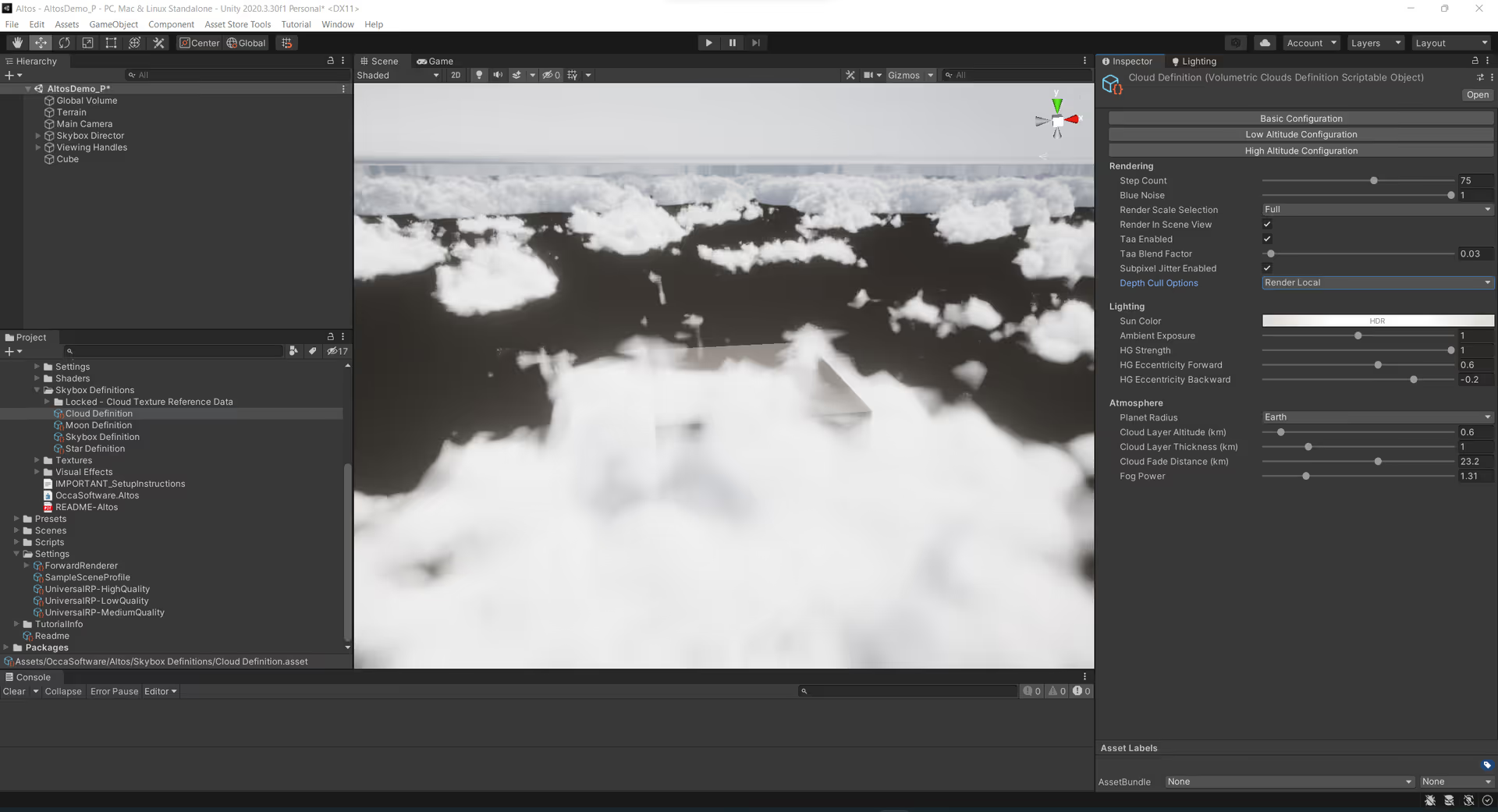Altos Patch 1.11 Notes
In Altos 1.11, I’ve introduced an update to the weathermap system and improved the rendering quality of high altitude clouds. I’ve also added a new 2D Cloud texture that is the new default for high altitude and skybox clouds. It looks great.
Weathermaps
The weathermap is a texture that describes where volumetric clouds are able to form.
Before this update, you could only use pre-baked textures as your weathermap, and these weathermaps were static in space - no panning or scrolling.
Now, there is a new type of Weathermap in town: Procedural. Infinite clouds, no pre-baking required. You can also set a new Weathermap Velocity parameter that will pan your weathermap over time, as well as a Weathermap Scale parameter that determines how closely packed your clouds will be. Further, you can define the Value Range output from the procedural noise. This acts as a secondary cloud coverage setting, masking clouds from some areas and guaranteeing clouds in others.
Texture-based weathermaps are still supported. They also benefit from the new Weathermap Velocity parameter, so you can now pan your Texture-based weathermap overhead.
High Altitude Clouds
I use constantly changing noise offsets to determine the position in space where I sample from our cloud volume. This helps us to sample across the complete cloud shape while integrating the results using our Temporal Anti-Aliasing. However, the noise offsets are not required for High Altitude Clouds, but were being used anyway. As a result, the High Altitude Clouds could sometimes be unusually noisy or could be rendered below their defined height (as a result of the offset).
Going forward, I’ve decoupled the High Altitude Clouds from the noise offsets system so that these clouds render more consistently in space and with higher quality.
Learn more about Altos
